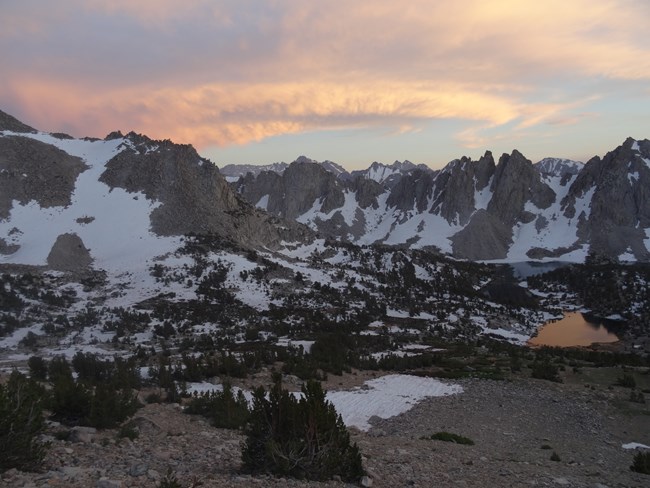
Photo by: Mandy Holmgren, The Institute for Bird Populations These two predominantly wilderness parks lie side by side in the southern Sierra Nevada, east of the San Joaquin Valley. Extreme topographic differences and a striking elevation gradient (ranging from 1,370 feet in the foothills to 14,494 feet along the Sierran crest) create a rich tapestry of environments, from the hot, dry lowlands along the western boundary to the stark and snow-covered alpine high country. The parks are noted for their giant sequoias, high peaks and alpine areas, deep canyons, vast caves, numerous lakes, streams, and wetlands, and a high diversity of plants and animals. These varied habitats support more than 1,200 species of vascular plants and a rich assemblage of animals, including large mammals such as bear, deer, and mountain lions; small mammals like chipmunks and pikas; 17 species of bats; numerous amphibians and reptile species; and more than 200 species of birds.
Inventory HighlightsResource inventories are extensive, point-in-time surveys of plants, animals, or abiotic resources such as water, soils,and geology. The Sierra Nevada Network conducted biological inventories to help parks fill in information gaps on special
Periodic inventories are important to document changes in the species that occur in parks, where they live, and their abundance. Monitored HereIn Sequoia and Kings Canyon National Parks, the Sierra Nevada Network works with park staff and partners to monitor:More InformationFor more information about Sequoia and Kings Canyon National Parks, park natural resources, and resource management and science, visit these park pages:Sequoia and Kings Canyon National Parks Home Page Sequoia and Kings Canyon National Parks Nature Pages Sequoia and Kings Canyon National Parks Science and Research Pages |
Last updated: August 10, 2018
